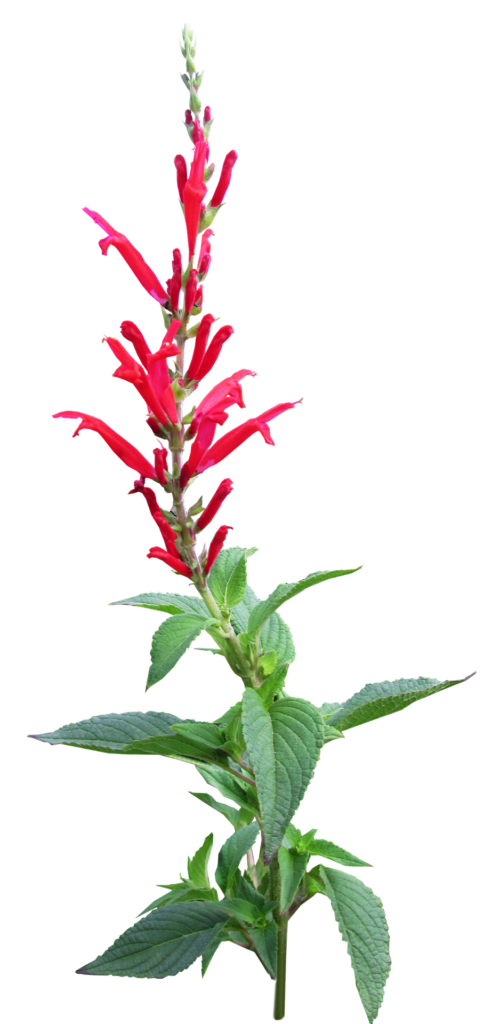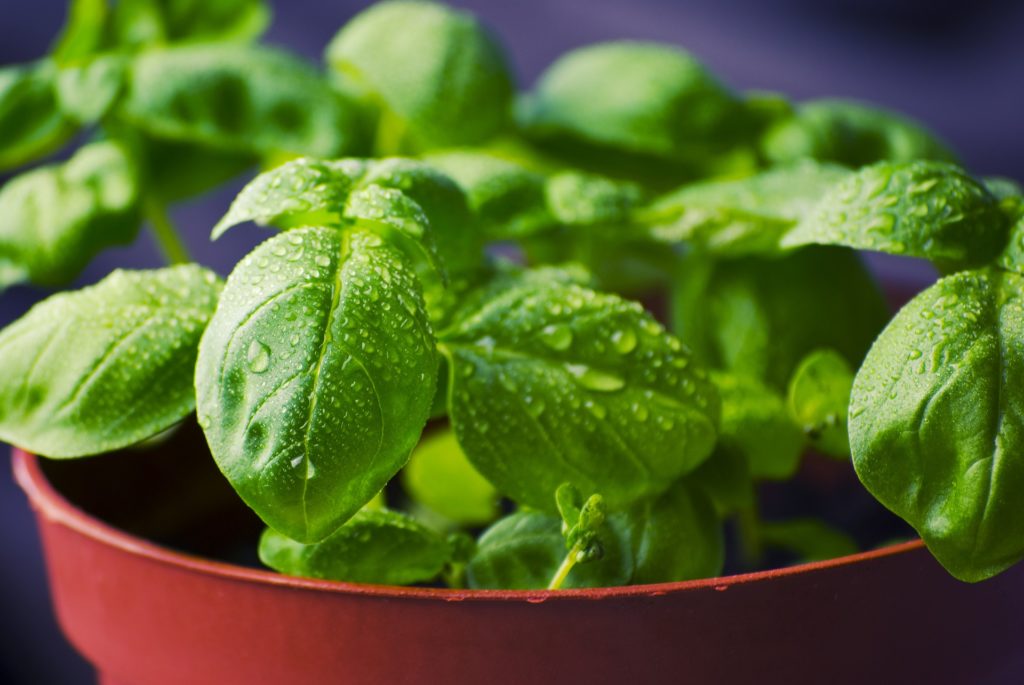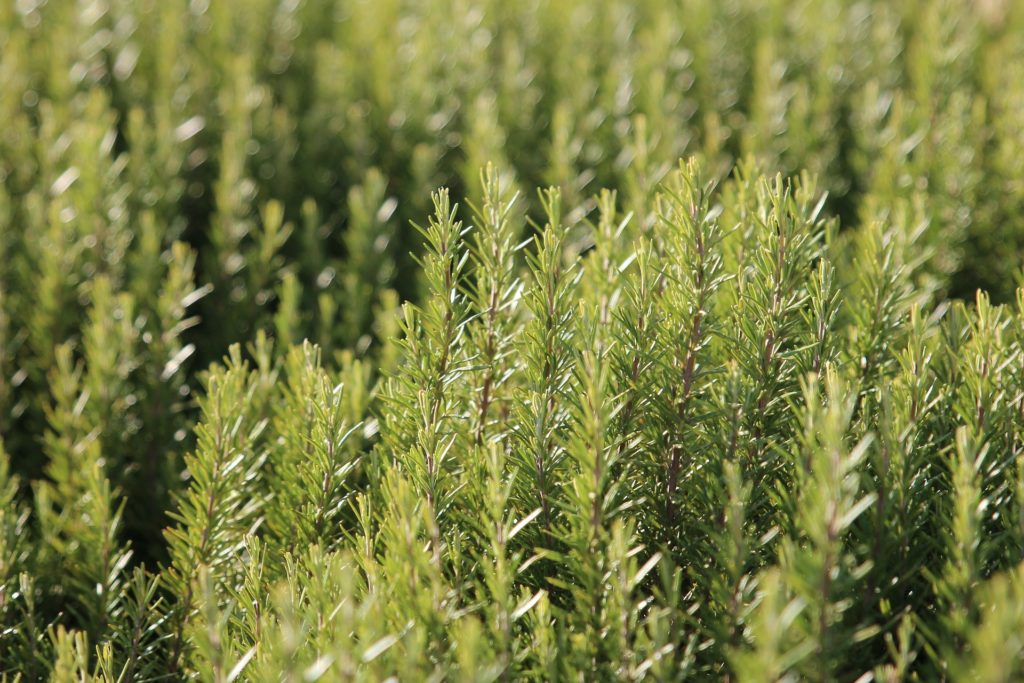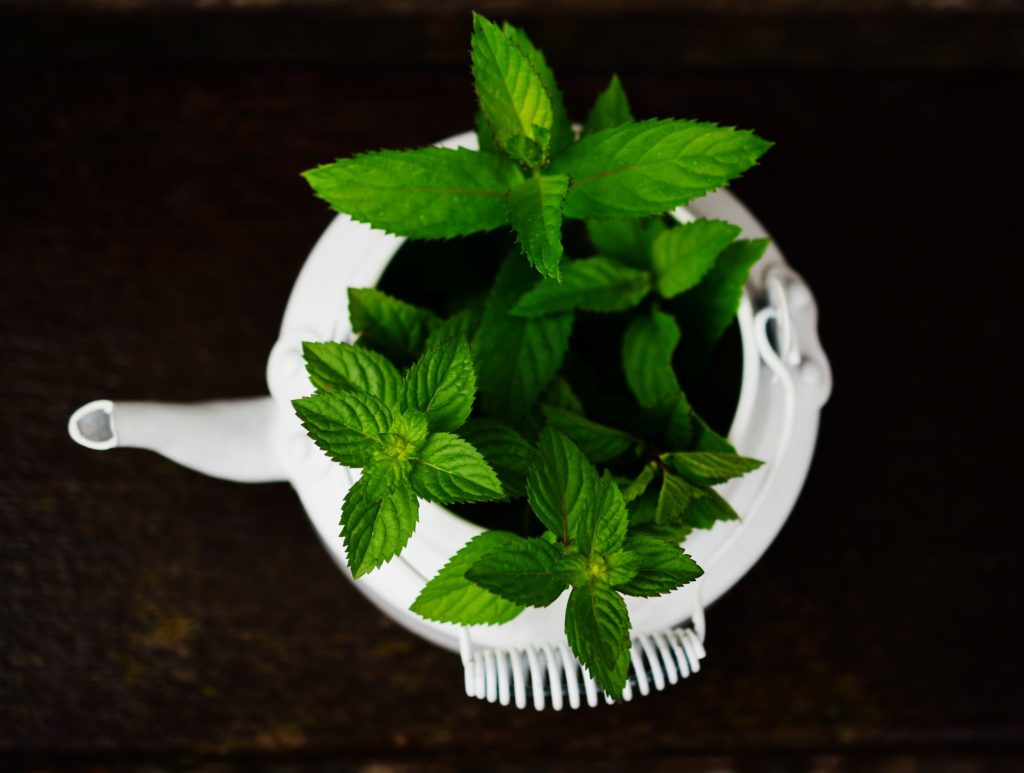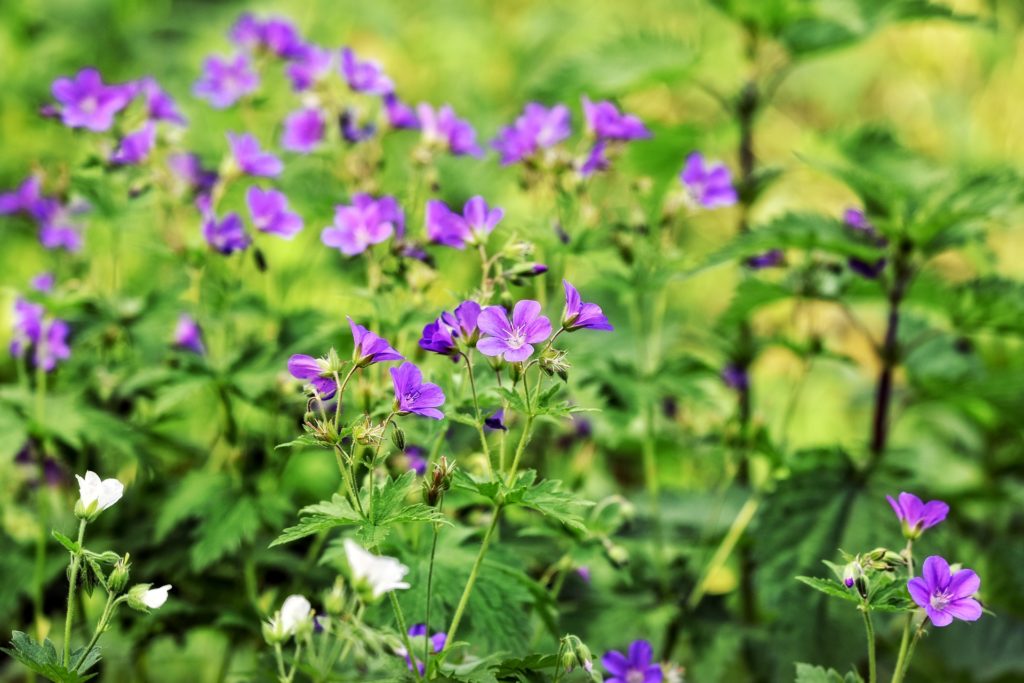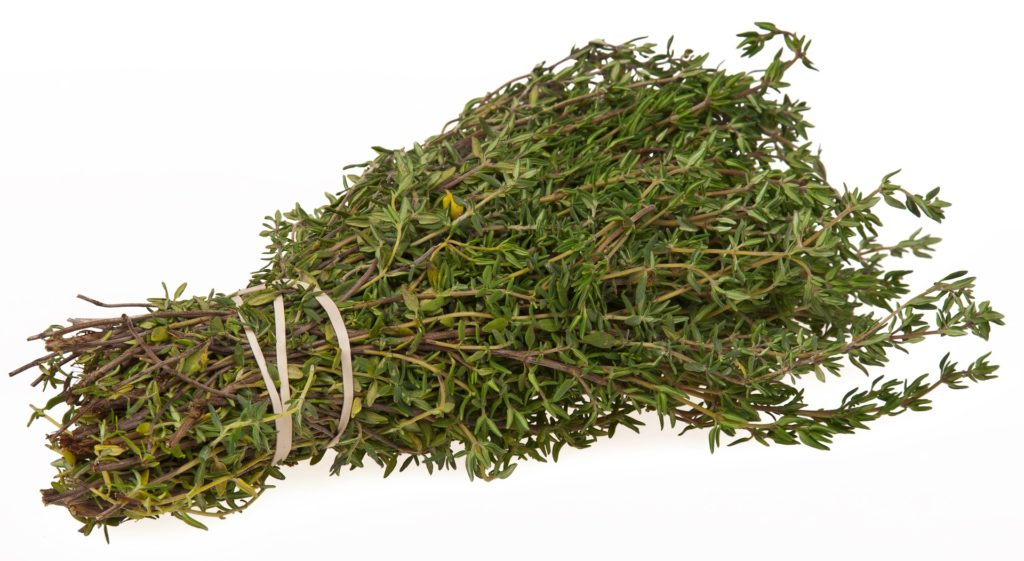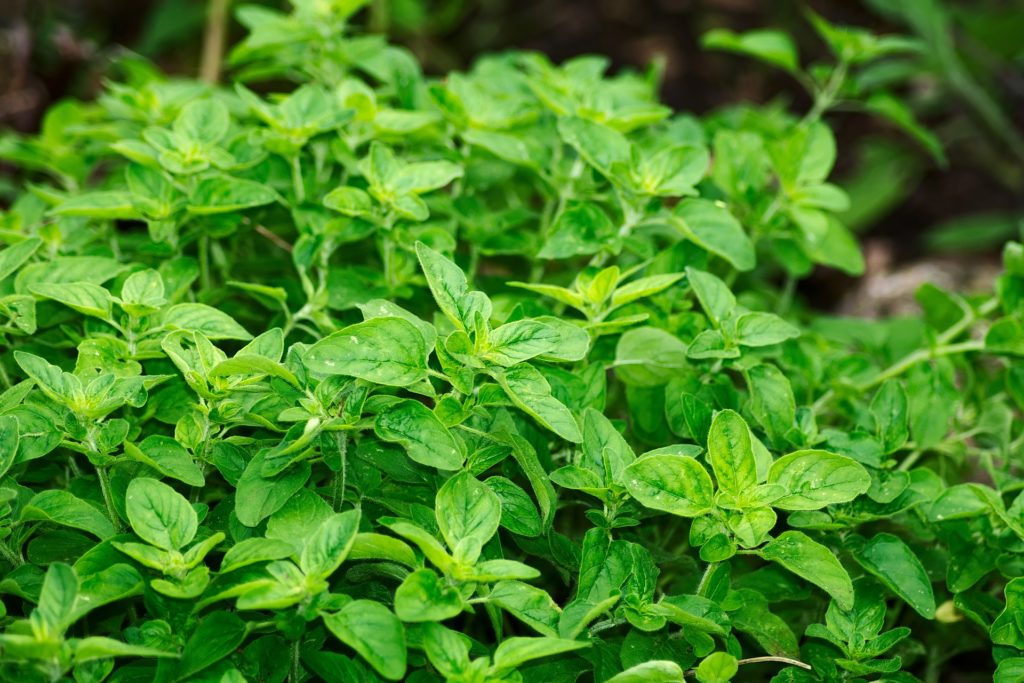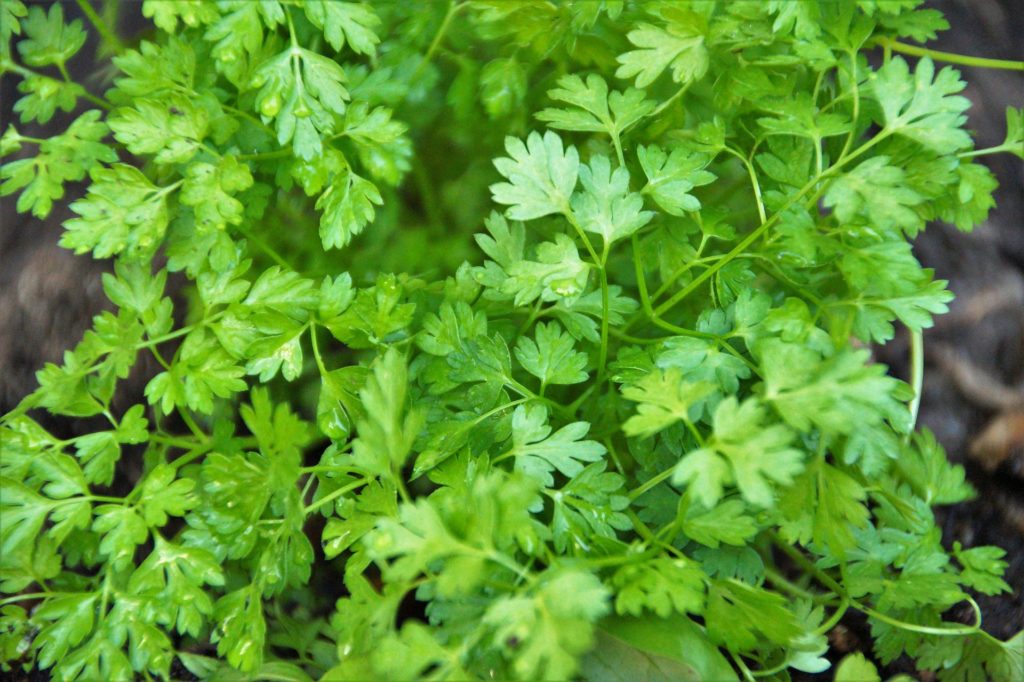Having a piece of the herb in your home is never a bad idea. It’s a great way to get closer to nature, add some colours, nice-smelling, and relaxing fragrance to your home. It is also a perfect way to get some of your favourite herbs into your cooking. However, if you are bringing it into your living space, some gardening experience and knowledge about the herb types and growth conditions are considered. To make indoor herb growing a success, things like the amount of sunlight, water, soil nutrients, and suitable climate/season, etc. are looked into-
This review talks about 10 of the best smelling herbs to grow indoors. Let’s dive in with number one.
1. Lavender
Lavandula, as it is scientifically called, is a genus of plant herb in the mint family. It smells as beautiful as it looks. It has a slender, nicely arranged bract in its flower with a very bright purple color which may vary with the type of species selected. Cultivated in many parts of the world that makes it suitable for indoor gardening use. This ornamental plant is used for culinary herb, landscaping, and commercially for extraction of its essential oils.
But in the home, it is basically for its beauty and distinct fragrance it leaves behind.
2. Pineapple sage
Salvia elegans commonly known as pineapple sage is a native of Mexico pine and oak forest edge. It prefers the low temperatures, colder climate. Its fragrance and sweet smell are from the crushing of the leaves; however, aroma depends on the moisture, species, and climate condition. This semi-woody herb produces yellow-green leaves, with beautiful hair surrounding them. Thus, the result is the fuzzy look of the plant. Blooms late in the season and have red flowers tubular. With its pineapple fragrance, your air is sure to be refreshing and calm.
Growing pineapple sage in the garden
Pineapple sage can be grown from seed but the cultivars are usually propagated from tip cuttings during the fall or spring season. They do better in full sun and in moist but well-drained soil. You should ensure the garden soil is moist as the plant will wilt if too dry. Pinch the plants to produce more branching.
Pros
· Has well-defined foliage and grown with other herbs where it gives a nice contrast
· Can re-grow after they die without you replanting them
· Grown in flower pots and you can move it to any position in your home
· Usually resistant to most outdoor pest
· Pineapple sage is favorites of the hummingbirds
· Leaves and flowers are edible and used in home cooking
Cons
· It blooms very late in the season
· Pineapple sage are easily killed/damaged by frost
· May attracts bugs and spiders into the home
· Leaves curls up if it becomes dry/desiccated
3. Basil
Scientifically know as Ocimum basilicum is an herb that can either grow as an annual or perennial or shrub herb. Native to the Mediterranean and tropical region of the world, it is quite straightforward to have it growing indoors. Has a variety of cultivars and valued for its smell. Mostly grown for their leaves (use as a culinary herb) and strong sweet-smelling aroma with a pinch of choking that goes with it when planted indoors; Leaves can vary in size, with up to
· May attracts bugs and spiders into the home
· Leaves curls up if it becomes dry/desiccated about 12cm long and 7cm wide. They are characterized by a single taproot for support and flowers are small and white.
Growing Basil plant in the garden
Ensure that the soil is moist else mulch around the plant. Water the plants during the hot season. Prune after the seedlings have produced their first six leaves to encourage branching. Pinch off the center shoot after about 6 weeks to prevent early flowering. Try to harvest your Basil before the cold season as cold temperature can destroy the plant.
Pros
· Use as culinary and ornamental plants
· Very easy to grow because of its unpretentious seeds
Cons
· They are prone to many fungi and bacterial diseases
· Disease can damage the early stage of development
· It must not be consumed by people with certain types of health conditions like epilepsy, a heart condition, and even pregnant women.
Mediterranean and tropical region of the world, it is quite straightforward to have it growing indoors. Has a variety of cultivars and valued for its smell. Mostly grown for their leaves (use as a culinary herb) and strong sweet-smelling aroma with a pinch of choking that goes with it when planted indoors; Leaves can vary in size, with up to
· May attracts bugs and spiders into the home
· Leaves curls up if it becomes dry/desiccated
4. Rosemary
Scientifically called Rosmarinus officinalis is a native-Mediterranean herb that has needle-like leaves. Just like other herbs, rosemary plays a significant role in health as well as a natural fragrance. If humanity is to be considered, then this magical herb is inevitable.
It is a lovely earthy smelling plant, and one gets the fresh fragrance from crushing the leaves.
Though rosemary prefers the cooler temperatures of about 40-60 F it can survive higher temperatures, sunny and dry weather conditions also. That is why a great pick to have indoors.
Flower color varies with the species pink, white, purple, or blue.
Pros
· Is a perennial herb and will hang around for long
· Rosemary is useful in treating indigestion.
· It is because this plant enhances memory and concentration.
· Add flavors and sweet smell to food
· Its fragrance can play a significant role in improving someone’s attention, accuracy, speed, and performance.
· Rosemary has carnosic acid, which can cure damage by free radicals in the brain.
· Besides, when you experience a stroke, this herb can help in quick recuperation if the right dosage is adhered to.
Cons
· It can lead to stomach and intestinal irritation if consumed in large quantities.
· It’s abortive.
· High doses can induce vomiting and coma.
5. Peppermint Herb
When you think of peppermint, what comes to your mind is probably candy or herbal tea. However, the Peppermint herb is more than just flavoring for edible substances; it is also functional as a decorative plant and an aromatic indoor plant. The Peppermint herb has distinct features and a variety of plant species, but it’s fresh, the fruity fragrance remains the same.
Pros
There are several benefits of planting Peppermint herb as an indoor plant:
· Peppermint herb is a perennial, meaning it lives for more than two years.
· A single cutting or two can thrive into a plant; you don’t need a lot for indoor planting.
· It provides a clean, fresh, fruity fragrance in your home.
· In cold climates, indoor plants can produce fresh leaves through the winter season.
· Peppermint herbs can be used in creating dessert dishes.
· Peppermint also serves in creating herbal medicine.
· The grass requires minimal care, be sure to water it evenly, and use suitable soil similar to its natural environment.
· Peppermint herbs are known to be a deterrent too
Cons
Generally, most plants come with their designated pests and diseases; the Peppermint herb isn’t an exception. Some allergic reactions may also occur after using the leaves.
· Peppermint herbs tend to develop rust on their leaves.
· Peppermint may also cause heartburn, mouth sores, or headaches.
· The roots of peppermint grow horizontally, with runners; this means that they can cover a lot of ground in a short time. To limit the space they can cover, put up barriers like walls, containers, etc.
· Powdery mildew is a fungal plant disease that can affect Peppermint plants.
· Verticillium wilt is also a fungal disease that can affect Peppermint plants.
· Fusarium wilt is a disease that typically affects basil and mint plants.
6. Geranium
Geranium Pelargonium is the scientific name of this plant. It is also called rose-scented geranium, and it is the only species from the family Geraniaceae that can be consumed by humans.
This herb grows and develops well in fertile and well-drained soil. Besides, it should contain a lot of organic matter. The herb can be grown indoors in pots and also in the garden. It grows and develops well in warm weather, although it can sustain some little frost.
Geraniums are heavy feeders, and therefore, they require fertilizer at least two times in a month. The fertilizer used should be water-soluble.
One key thing to note is that this plant requires plenty of water. Therefore, watering should be regularly done.
This plant can be used for decoration or medicine. Under decoration, geranium is widely used since its flowers host a lot of colors, and they are good-scented. Scented-geraniums can be chocolate, orange, rose, mint, and lemon scents. Its cute flower fragrance makes this plant ideal for growing indoors.
Pros
· The wide range of scents by the plant makes it useful to almost everyone.
· Geranium flowers are highly valued. Therefore, they can be grown for commercial purposes.
· It can be consumed internally, although not all types.
· It can be used to deter flies and other insects.
· If flowers are wiped down on wooden furniture, they give it a lovely and durable scent. Besides, the furniture gets nourished.
· It can be used to scent rooms.
Cons
· Their smell can be overpowering hence inducing discomfort.
· The process of growing and rearing them is enjoyable, and it requires one to devote time for better results.
· The conditions needed for the plant to grow are not found everywhere. Therefore, some areas cannot produce the plant.
7. Thyme
Thyme an herb from the genus Thymus and scientifically known as Thymus Vulgaris is a native to the Mediterranean region and some other parts of Africa. Used in many ways, including; used as an antibacterial and anti-acne product. With an active ingredient known as thymol, which has a lot of effects on the body? Thymol prevents viral and fungal infections. This herb acts as an anti-inflammatory, and it reduces the possibilities of acquiring diseases such as bronchitis, colds, flu, and chronic asthma, among others. It gets rid of mucus and phlegm from the respiratory surfaces and prevents development due to microbial that can lead to the diseases as mentioned earlier and others.
Thyme, the herb has antioxidants such as zeaxanthin and thymosin, which help in neutralizing and getting rid of free radicals’ all over the body. Thyme has a supple amount of iron and other minerals; this makes an ideal environment for stimulating the manufacturing of red blood cells. The minerals, vitamins, and antioxidants found in this herb help to achieve adequate working of the heart. This herb also contains carotenoids and vitamin A, which plays a significant role in vision health.
Thyme is also a lovely smelling herb, and this can never be mistaken. That is why a good pick for indoor gardening is and use in culinary — besides, the leaves and stem brewing releases a pleasant smell into your living space.
Thyme fragrance also acts as an insect repellant when grown indoors. Therefore, it helps eliminate or reduce those flying bugs. Above all, thyme can be used as a perfume to boost body smell.
Pros
· It helps in boosting the immune system.
· To keep away pests.
· It can be used as incense.
· It is edible and anti-acne.
Cons
· It becomes toxic to the body when taken in large quantities.
8. Gardenia
Are a flowering plant and a native to subtropical and tropical regions of Africa, pacific islands and Asia? The commonly cultivated species of gardenia is Gardenia Jasminoides. Gardenia exists in various forms, that is, in the way of a tree, in the form of shrub, and dwarf forms. This herb is suitable for indoor cultivation. Gardenia can grow up to a height of 8feet while spreading uniformly.
Flowers of gardenia are typically white with a variety of blossoms ranging from 2 to about 5 inches in diameter. This plant does not grow well in frost zones. Therefore, they would only give better yields if grown in warm regions. If grown outdoors, this plant requires some shades, which is why the best pick for indoors. Gardenia requires moist and well-drained acidic soil that is rich in organic matter. Cultivators at home shouldn’t provide gardenia with excessive water since it needs little damp to survive.
This herb requires warmer temperatures during the day and cooler temperatures at night. Gardenia requires frequent fertilizing. Fertilizers used should be the ones moderately applied and for acid-loving plants.
This herb has a lot of health benefits both as a fragrance and as a beautifier.
Pros
· Gardenias are grown for their beautiful nature hence increasing aesthetical value.
· Used as hedges, screens, borders, or ground covers.
· They can be sold, thus bringing income to the cultivator.
· They do not require much attention or incurring a lot of expenses in their growing.
· The leaves and flowers of gardenia can be extracted to make supplements for medical purposes.
· It helps in fighting obesity and inflammatory diseases.
· It’s a highly aromatic herb and can be used in rooms.
· It can help to reduce cramps, pain, and fatigue.
Cons
· If used by expectant mothers as a medicine, it can be abortive.
9. Oregano
Oregano herb is a multi-benignant flowering plant scientifically known as Origanum Vulgare alternatively called Wild marjoram. Oregano Herb etymology reined from the Greek words oros which means mountain, ganos meaning joy. The combination of this means mountain’s happiness, as its natural habitat is the mountain. Tallness ranges from 20cm-80cm, naturally decorated by a purple flower and a grayish-green.
Oregano plant leaves
The extremely nutritious herb contains a robust pleasant smell and a spicy flavor that’s similar to sage and thyme. This fantastic flavor makes the food receives jaw-dropping complements, especially when mixed with lamb meat, soup, stew, and pasta. The surprising effects of it in making food heavenly prepared are the reason why the famous food (Pizza) is incomplete without its Oregano oil.
The commendation of this nose mesmerizing smell persuaded perfume-making companies to use this plant in producing perfumes such as Armani PriveOranger.
Pros
There is more than 23 advantage of planting Oregano herb as an indoor plant such as:
· Oregano is one of the best fountains of iron, manganese and vitamin A
· Regular consumption of oregano leaves to enhance the immune system.
· It helps the ambiance with a clean, fresh, fruity fragrance.
· It adds appetizing spicy flavors to your dishes.
· Researchers proved that it comprises enough antioxidant.
· It contains calcium and magnesium, which are the heavy-duty component for an excellent metabolic bone.
· The herb leaves are being used in perfume making industries.
Cons
· Allergies: it can cause reactions in individuals allergic to Lamiaceae family plants when inhaled or eaten
10. Chervil Herb
Chervil herb is a Godsend herb in the area of bringing healthiness to the body and the pleasantness of the atmosphere through its aromatic and delicious light fragrance. The Greeks call it Chairephyllon meaning leaves of happiness; other moniker includes Garden Chervil and French parsley. The plant growth centimeter ranges between50cm-70cm.
The annual Chervil nutritious herb has sweet, delicate minty flavour when garnishing your dish. It was initially made known by the Romans and now used across different nations due to its essential health advantage. Such as being one of the fountains of nitric oxide, which prevents cardiovascular infection. It trots out itself to be a celebrity in dish resurrection even in classic French casseroles.
It’s also one of the recommended herbs for indoor plantation. When it’s treated with care, adequate watering and kept under shade, the shady arena is preferred compared to some other herbs requiring sunny conditions.
.
Pros
· Chervil aids respiratory system by evacuating mucous, aversion of bronchitis, and coughs.
· It reduces the risks relating to bladder stones and the kidney.
· High blood pressure is also managed using Chervil herbs.
· It adds appetizing minty flavors to your casseroles.
· Skin related infections can be controlled using the herb such as acne and eczema.
· During the menstrual cycle, it reduces water retention and insect bite pains.
· The herb leaves are being used in perfume making industries which Eau de Toilette is an example.
Cons
· Allergies: it can cause reactions in individuals allergic to Parsley family plants when inhaled or eaten.
· It was advised by Medical personnel not to be taken by a pregnant woman as it could cause genetic alteration.
BUYER’S GUIDE
Buyers find it hard choosing one of the best smelling herbs once in the herb store. Therefore, you need to have useful information about the herb itself. Here are some conditions to consider before going to select and buy a sweet-smelling herb for indoor growing and care
Well, considerations vary due to several factors, including the place where the buyer stays.
1. Presence of water
Water plays a significant role in making sure indoor herbs thrive and give better results as per anticipations. Therefore, before deciding on the type of indoor herb to buy, the buyer should consider the availability of water. Indoor best-smelling herbs have different water capacity requirements. That is, some require plenty of water while the contrast is what others need. For example; rosemary involves plenty of water for it to thrive while gardenia requires little moist to give better results just like rosemary.
2. Availability of sunlight
Sunlight remains one of the factors needed by indoor herbs to thrive, and it is not only for indoor herbs but all plants in general. Sunlight intensity varies according to regions. Regions around the equator receive a high amount of sunshine, and experience about 12 hours of the sun while Polar Regions receive the lowest amount of sunlight in a day. Therefore, the availability of the sun is a significant factor to be considered by buyers before buying indoor herbs.
Indoor herbs such as gardenia require a high amount of sunshine while geranium requires partial shading. That means it can be grown in areas experiencing high temperatures. Geranium also cannot do well in frost zones.
3. Type of soil
Different indoor herbs grow well in different soil types. There are a variety of soil types across the world. Indoor herbs, just like other plants, grow well in different soil types. Some like geranium is more productive when grown in fertile and well-drained soils with a lot of organic matter, while other herbs such as gardenia require well-drained acidic soil. That means you shouldn’t buy an herb that does not match with the soil type in your area. If you have to, then, you need to incur extra expenses buying fertilizer that will help the herb.
4. Presence of humidity
Just like other factors, the rate of moisture affects the indoor best smelling herbs in many ways. Therefore, a buyer should be at a position of knowing the percentage of humidity required by the type of grass. However, the rate of moisture is directly proportional to the amount of sunlight. Herbs like geranium require a high percentage of humidity.
5. Effect on health
The fragrances of indoor herbs affect the health of a human, although not all herbs. Besides that, some people are allergic to some scents from individual flowers. Therefore, knowing your fragrance preference is critical before deciding on the grass to buy.
6. Intended use
Not all people grow indoor best-smelling herbs for their benefit. Some grow them, although in a small scale, for commercial purposes. For these two reasons, a buyer should seek to know the return on investment (ROI) of different indoor herbs before buying.
Other benefits
Herbs have various benefits to the user. Example, decorations, and medical purposes. If the user wants to benefit in a specific medicinal value apart from the nice smelling feature, then, he/she should consider the therapeutic value of the herb.
FAQs
1. Is it reasonable to grow a mixture of herbs?
Yes. Making sure that the mixed herbs have a mutual requirement under the conditions necessary for their growth.
2. Can herbs be used as food additives?
Some indoor best-smelling herbs have various uses like having medicinal value and being used as food additive too.
3. I heard some herbs could keep away pests, is it true?
Yes. Most of them are used as insecticides and pesticides. After further processing.
4. How do I use best smelling indoor herbs to scent my house?
It is simple. You can clean the herb, keep in open container, and place it in the room. Alternatively, you can take the leaves or the flowers; rub against surfaces such as wood furniture in the room.
5. Which indoor herbs smell like lemon?
The most known herb that smell. Like lemon is the balm.
6. Does verbena have a pleasant smell?
Verbena has a citrus smell which is close to that of lemon.
7. Which herb makes your house smell good?
Several herbs make a house smell good. Some of them are; basil, plumier, gardenia, eucalyptus, mint, and Arabian jasmine.
8. Is there a difference between lemon balm and lemon mint?
Lemon balm and lemon mint differ in both flavor and appearance.
9. Are there herbs that can grow without sunlight?
No herb can grow without sunlight. However, some herbs can grow in less sunlight, such as; chervil, lemon balm, catnip, parsley, chives, and mint.
10. Which herbs require full sun?
Some of the herbs that require full sun are; tarragon, thyme, dill, oregano, basil, and rosemary.
11. What herbs are most natural to grow in pots?
Oregano, chives, lemon balm, thyme, and parsley are some of the best herbs to grow in pots.
Conclusion
Everyone can have a sweet-smelling herb in their living space. With just a bit of care, these herbs can be lovely.
We want to hear from you, do leave a ping and let us know which one you will be getting for your home, now.



